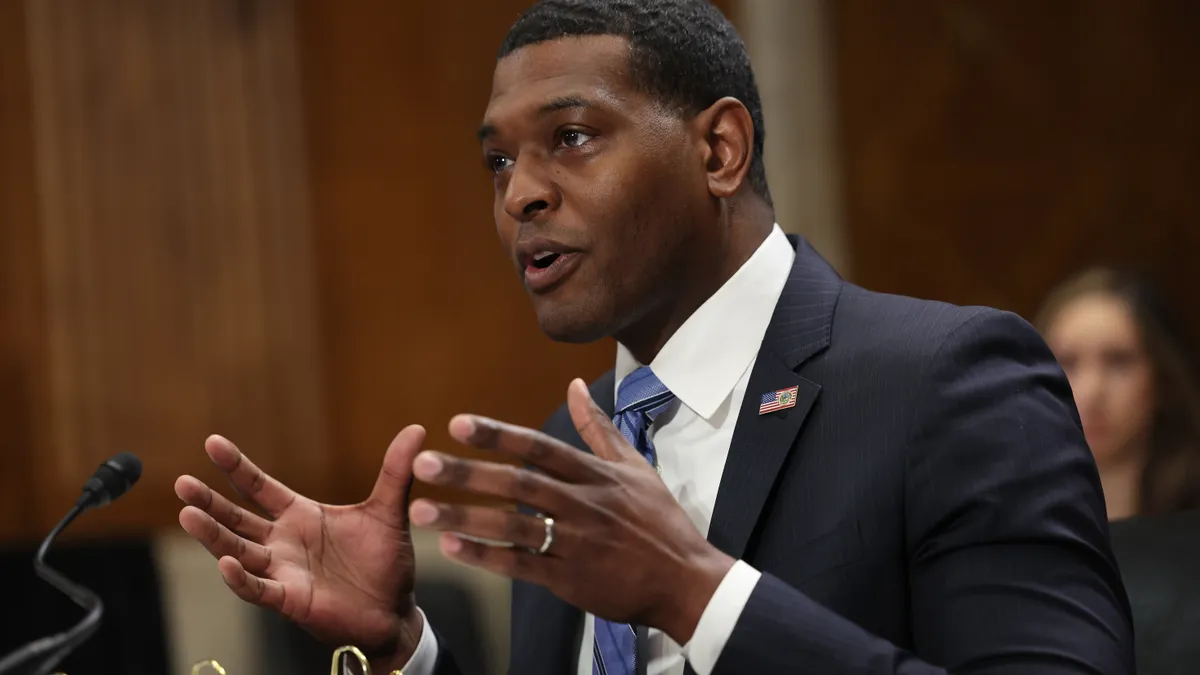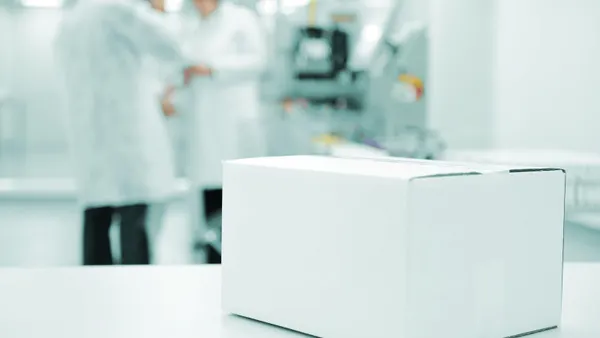Dive Brief:
- The U.S. EPA on Thursday released the finalized National Strategy to Prevent Plastic Pollution. It lays out actions to eliminate the release of plastic waste into the environment by 2040.
- The final version follows an April 2023 draft that drew nearly 92,000 comments, according to the agency, including from packaging groups and CPGs.
- EPA calls for developing a national extended producer responsibility framework, among other ideas to more sustainably manage plastics throughout their life cycle.
Dive Insight:
With just weeks to go before the Trump administration begins taking office, the U.S. EPA released this long-awaited finalized strategy.
It’s framed around six objectives throughout the plastics life cycle: reducing pollution from plastic production, innovating material and product design, decreasing waste generation, improving waste management, improving capture and removal of plastic pollution, and minimizing impacts to waterways and the ocean.
“From reducing cancer-causing pollution from plastic manufacturing facilities, to increasing industry’s accountability to take back recycled plastic packaging, to capturing waste before it ends up in our bodies and the environment, this strategy lays out the path forward for EPA and our partners to tackle this persistent challenge,” said EPA Administrator Michael Regan in the announcement.
Will Gartshore, senior director of policy and government affairs at World Wildlife Fund, said the strategy presents plenty of opportunities for action “beyond just the federal government,” including at the corporate, city and state levels.
The strategy stems from the bipartisan Save Our Seas 2.0 Act of 2020, which then-President Donald Trump signed into law.
“As the agency knows, this is being produced at the direction of both bipartisan interest in Congress and the former administration. So hopefully there's some ownership there as well,” said Gartshore.
“I think we can't predict what the next administration is going to do,” he said. Regardless of political will, Gartshore anticipates continued pressure from businesses.
“They've called for government to help set the policy frameworks that will allow them to do more,” he said. They need the “harmonization and rule-setting and leveling of the playing field that policy can give. So I don't think that call is going to stop. If anything, the problem is not going away.”
As for what’s possible in the year to come, Gartshore said not to expect an EPR bill introduced early in the coming Congress — but there’s hope for the later end. While it’s “not going to happen overnight,” there “seems to be a lot of momentum and goodwill” around discussions. And at least five U.S. states are offering packaging EPR policies to learn from.
“We have more and more examples to start from, as well as the ones internationally. And that gives you something really great to start to pull the pieces from and figure out what could work nationally in the U.S.,” he said.
EPA acknowledged a need to collaborate with different levels of government and other organizations as more states consider EPR policies. “EPA recognizes EPR as an example of a policy approach that has been effective at achieving circularity goals, including reduction and reuse goals,” judging by examples abroad, the strategy states.
EPA says that a national framework could “help increase the efficiency and effectiveness of these policies,” and consider how to best align them with bottle bills as well. “With thoughtful policy alignment, DRS can complement EPR programs to further boost recycling rates and incentivize consumer behavior change,” the strategy states.
In a briefing with EPA about the release of the strategy, the agency “noted more federal leadership and stakeholder engagement will be required before action plans for EPR and labeling can be defined,” said Rob Keith, Ameripen membership and policy director, in an emailed statement. Ameripen said it looks forward to working with the incoming administration, Congress and other packaging value chain stakeholders on a more harmonized approach.
The American Chemistry Council also said it agrees with the need for a national EPR framework.
But ACC took issue with other aspects. “[S]ome components of the agency’s strategy could inadvertently lead to the outsourcing of U.S. manufacturing,” said Ross Eisenberg, president of America’s Plastic Makers at ACC, in a statement Thursday.
Outside of EPR, other ideas that made it into the final strategy include:
- Exploring the creation of a voluntary certification to recognize plastic products that are manufactured under rigorous environmental standards.
- Identifying alternative materials, products or systems, such as non-plastic or non-disposable options.
- Reducing the production and consumption of single use plastic products.
- Increasing capacity to reuse materials.
- Facilitating more effective composting of certified compostable products.
Earlier this year, the White House released its own governmentwide strategy to “target plastic pollution at production, processing, use, and disposal,” and announced a goal of phasing out federal procurement of single-use plastics from all federal operations by 2035.
Biden’s EPA also previously issued a broader National Recycling Strategy, as well as a National Strategy for Reducing Food Loss and Waste and Recycling Organics. Ameripen, which focuses on U.S. public policy for the packaging industry, previously called for greater clarity from the agency on how the plastic pollution prevention strategy fit in with other related ones.
With the pollution prevention strategy now finalized, the industry is still awaiting a few other possible packaging-related releases in the Biden administration’s waning days, including an update to the Federal Trade Commission’s Green Guides.
The agency noted that the plastics strategy release comes as the final UN Environment Program intergovernmental negotiating committee meeting to develop an international legally binding agreement on plastic pollution is set to begin in South Korea on Nov. 25. “The strategy will help inform the international community of the wide range of actions available and already taken in the United States,” EPA said in its announcement.















